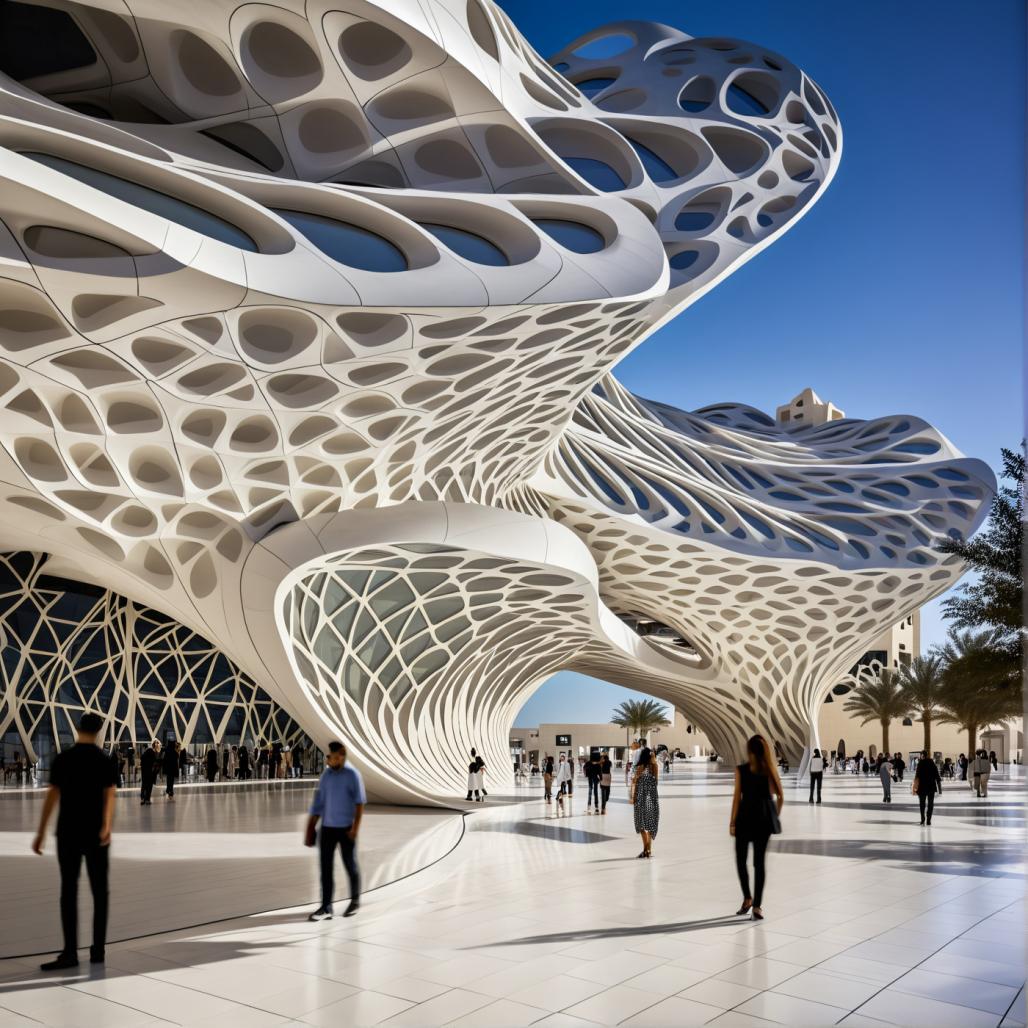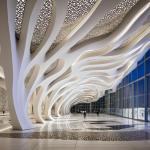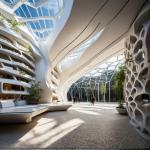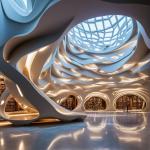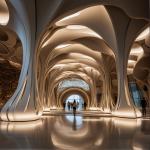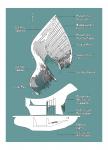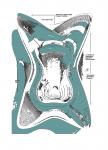Motion Museum: A Monumental Dialogue Between Parametric Design, Sustainability, and Contemporary Eclecticism in Doha, Qatar
The Motion Museum, situated in the cultural and urban fabric of Doha, Qatar, stands as an architectural manifesto that synthesizes parametric design principles, ecological responsibility, and an eclectic contemporary aesthetic. This edifice is not merely a repository of artifacts but an experiential domain that embodies the ethos of movement, transformation, and resilience—qualities deeply ingrained in Qatar's history and trajectory toward the future.
Why Qatar? Why Now?
Qatar’s meteoric rise as a cultural and economic hub in the Middle East provides the ideal context for the Motion Museum. Doha, a city in perpetual flux, serves as a fertile ground for architecture that mirrors its dynamism. This museum’s inception coincides with Qatar’s expanding commitment to fostering a global cultural dialogue, as evidenced by its burgeoning art scene and iconic infrastructural developments such as the National Museum of Qatar and Katara Cultural Village. The Motion Museum, with its emphasis on progressive design and environmental consciousness, aligns seamlessly with this vision, serving as a spatial articulation of Qatar’s cultural aspirations and its ethos of sustainability.
The Form: A Dynamic Confluence of Geometry and Motion
The architectural form of the Motion Museum emerges as a choreographed interplay of dynamic volumes and sinuous geometries. Inspired by the concept of perpetual motion, the structure embodies fluidity, rejecting static orthogonality in favor of sweeping curves and layered volumes. These forms, reminiscent of sand dunes shaped by the incessant winds of the Qatari desert, evoke a poetic dialogue between nature and architecture.
The museum's outer skin is a parametric lattice structure that adapts to the local climate. This skin not only acts as a solar shield but also modulates light and ventilation, creating a dynamic interplay of shadows that shift throughout the day. The use of advanced computational design tools allowed for the optimization of this façade, ensuring both aesthetic harmony and functional efficiency.
From Concept to Realization
The conceptual genesis of the Motion Museum revolved around the question: How can architecture capture the essence of movement while remaining contextually rooted? The journey began with abstract sketches and volumetric studies that explored fluid geometries and their interaction with light and space. These explorations eventually crystallized into a cohesive form that balances monumental scale with human intimacy.
Internally, the museum’s spatial organization echoes the theme of movement. A central atrium, reminiscent of a vortex, spirals upward, guiding visitors through an immersive narrative of exhibits. This circulation strategy not only enhances the visitor experience but also creates visual and physical connections between different programmatic zones.
Landscape and Urban Integration
The museum’s landscape design extends its narrative of motion and ecological sensitivity. Undulating pathways, shaded plazas, and water features create a seamless transition between the built form and its surroundings. Native vegetation and xeriscaping principles were employed to minimize water consumption, reinforcing the project’s commitment to sustainability.
In its urban context, the Motion Museum acts as a connective node, bridging adjacent cultural landmarks and public spaces. Its strategic location fosters pedestrian connectivity and enriches the urban tapestry of Doha, transforming the museum into a civic landmark that invites interaction and engagement.
Interior Design: An Experiential Continuum
The interior spaces of the Motion Museum reflect the same principles of fluidity and adaptability as its exterior. Organic forms, flowing partitions, and a palette of locally sourced materials create an environment that is both immersive and contextually resonant. The play of natural light, filtered through the parametric façade, imbues the interiors with a dynamic quality, constantly shifting with the passage of time.
Interactive installations and multi-sensory exhibits further enhance the visitor experience, making the museum not just a space for passive observation but a realm of active engagement and discovery.
2024
A Legacy for the Future
In an era defined by rapid technological advancement and environmental challenges, the Motion Museum stands as a testament to the potential of architecture to inspire and transform. It is a space where the past, present, and future converge—a living monument to the ever-evolving narrative of Qatar and its people. Through its innovative design, sustainable ethos, and cultural relevance, the Motion Museum aspires to leave an indelible mark on both the architectural landscape of Doha and the global discourse on contemporary design.
Lead Architect and Urban Designer : Mehraz FFrahani
Design Team :Farzaneh Hassanzadeh, Fereshteh Farahani, Mahdieh Hassanpour, Amirali Sabouri
Design Year : 2024
situation : Proposed
Year of completion : 2028
